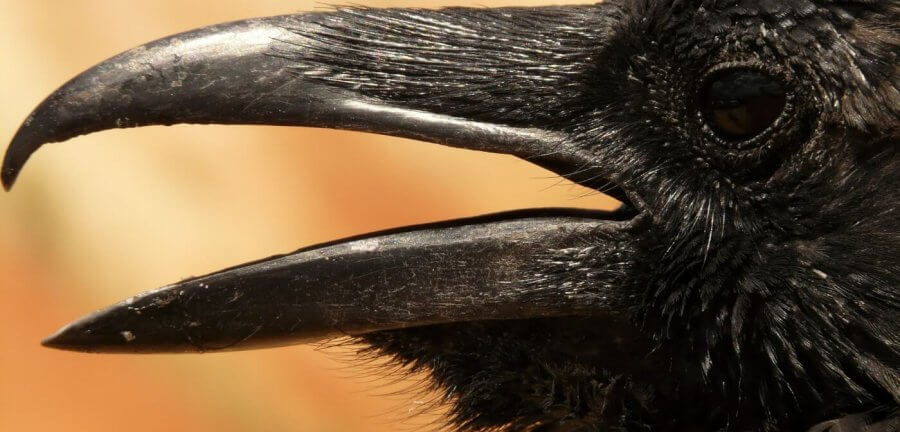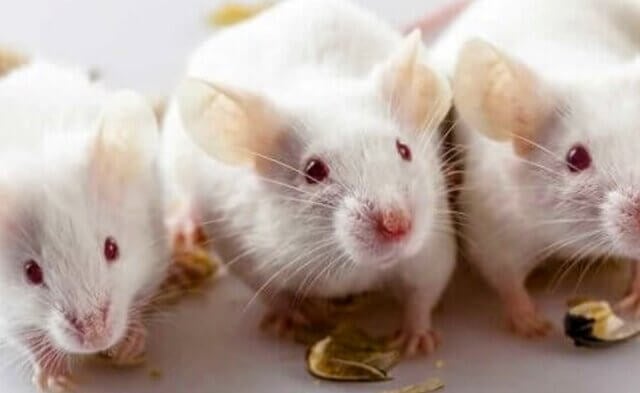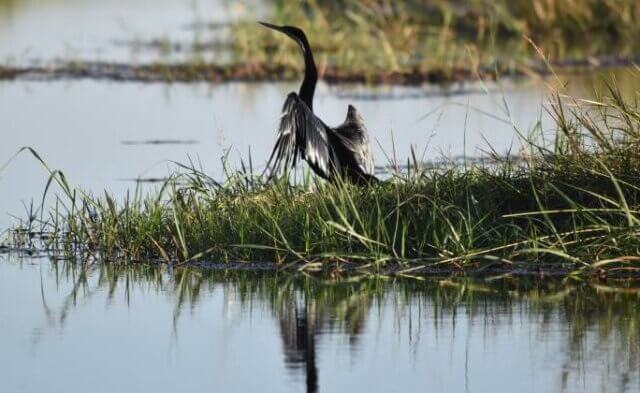Crows, how do I love thee? Let me count the ways.
- Crows mate for life and form deep family bonds. Whenever you see a small group of crows foraging for food, you are observing a family: Mom and Dad crow, that year’s babies, and any older siblings who have not yet established their own territories. Older siblings who have started their own families do not go far, and related groups of crows often “check in” with each other throughout the day.
- Crows are fiercely protective of their kin, as some hapless humans have discovered after “rescuing”—i.e., birdnapping—fledglings, only to find themselves being dive-bombed and otherwise harassed by crows for months on end following the event, while other humans can come and go without incident.
- Crow language is so complex that researchers have had little success creating a crow-human “dictionary.” While different sequences of “caws” relay different information, other characteristics, such as tempo, pitch, and inflection, can change the meaning.
- Crows are so smart that they have different warning calls for different threats (a cat or a human walking a dog, for example)—and they can distinguish between individuals of the same species, realistically assess the dangers presented by each, and adopt distinct warnings accordingly. Michael Westerfield, the author of The Language of Crows, observed this firsthand at a crow-feeding station in his yard. One spring, two unfamiliar cats started hanging out in his yard, and at first, both provoked a “code red” alert. But the crows quickly realized that while one of the cats was a hunter, the other old, fat fellow was interested only in looking for bits of kibble that had fallen in the grass. You can hear the distinct alert calls for each cat on a CD that accompanies Westerfield’s book.
- Young crows, often while alone, will string together long chains of clicks, coos, squawks, and other sounds—much like human “baby talk.” Westerfield believes that these semi-random ramblings (also on the CD) are the precursors to more sophisticated crow communication.
- Crows hold funerals when a loved one dies.
These are just a few of the insights that you will discover in this delightful book. Westerfield, a former marine biologist who now spends his days observing crows, is the coordinator of Crows.net, a collaborative research project that, since its inception in 1999, has collected and posted hundreds of observation reports of crow behavior from around the world, many of which are included here. He explains that he approaches crows as a naturalist, rather than as a scientist, so he doesn’t feel the need to subject them to experiments in order to “prove” what is obvious simply through careful observation. He also seems like the type of person you’d want to hang out with on a sunny afternoon, watching the skies.
For example, Westerfield describes efforts to remove “problem” winter roosts by killing (sometimes many thousands of) birds as “murder” and does not look kindly on hunters who kill crows for “sport.” In the saddest chapter of the book, which concerns people who have ill-advisedly (and illegally) kept crows in captivity, Westerfield writes, “Our desires for the wonderful companionship crows can provide, and our good intentions of treating them well cannot justify separating a youngster from his family and flockmates and the wonderful life of a free flying crow.”
This is sage advice regarding any free-roaming animals, who are always better off in their real homes than in our human homes.
The Language of Crows is a must-read for anyone who admires these smart, clever, funny birds. Get your copy by visiting Westerfield’s website, and in the meantime, leave us a comment telling us your favorite trait of these crafty corvids.





